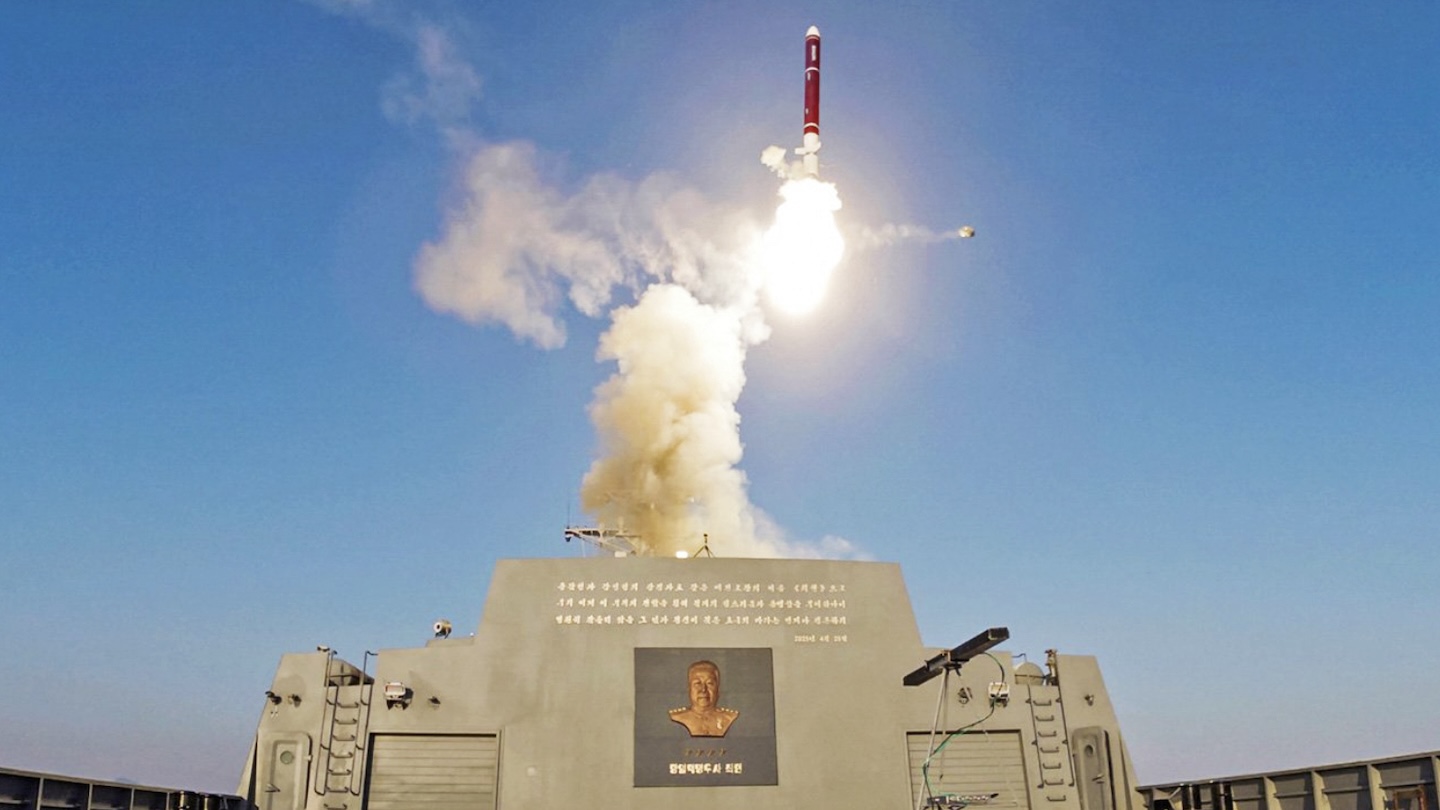Imagery has emerged showing North Korea’s heavily armed new frigate, the Choi Hyon, firing a variety of weapons from its large array of vertical launch system (VLS) cells. The missiles seen appear to include a previously unknown air defense missile and possibly a new supersonic cruise missile. The warship was only officially unveiled last weekend, as you can read about in our previous detailed analysis of it.
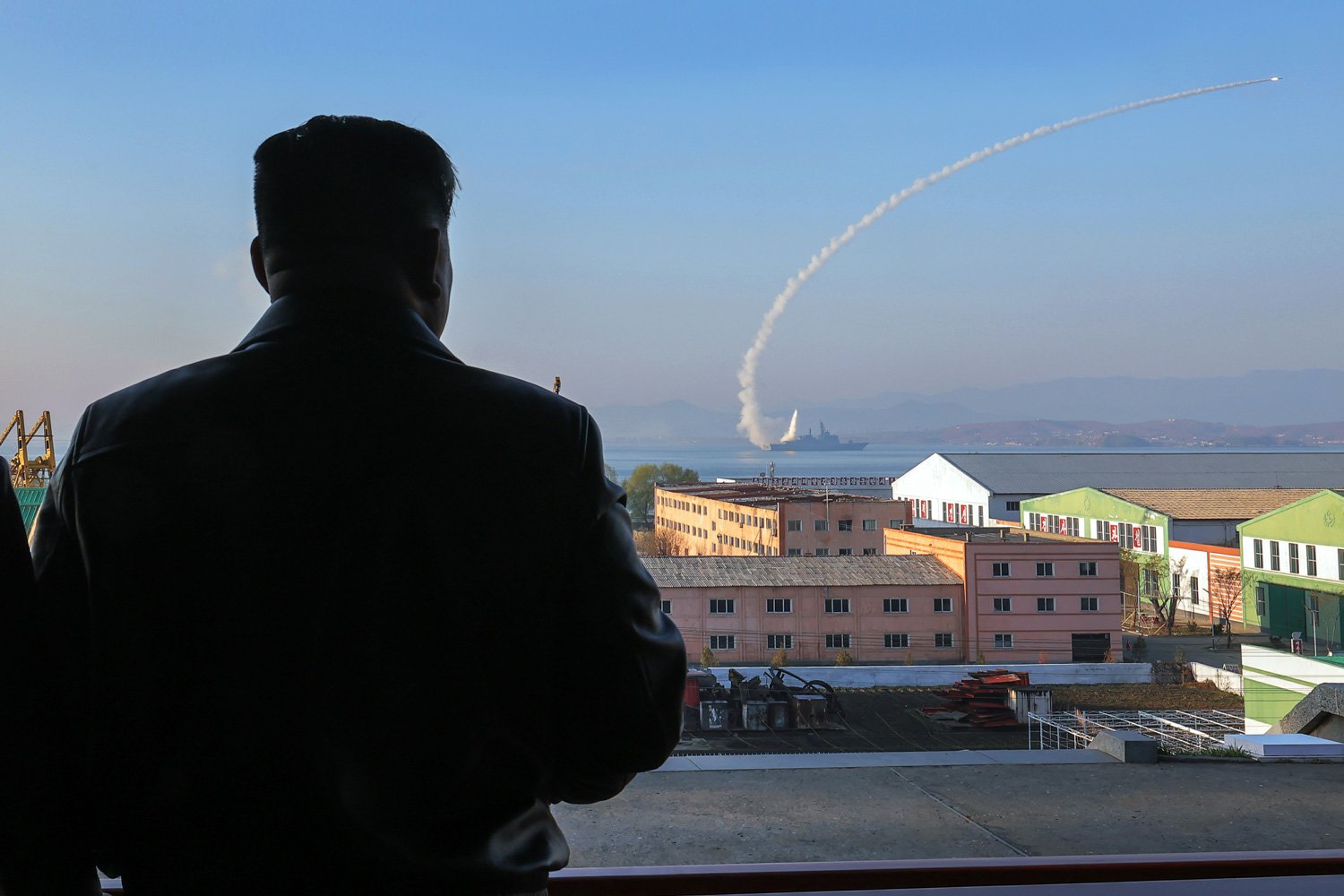
The imagery in question was released today by North Korean state media and shows the Choi Hyon during weapons testing off Nampo, on the west coast of the country, which is said to have taken place from April 28-29. State media also claims that test firings of supersonic cruise missiles, strategic cruise missiles, and anti-aircraft missiles, as well as the main gun, took place on the 28th, followed by firings of “fleet tactical guided weapons,” various onboard machine guns, smokescreens, and countermeasures dispensers on the 29th.
While imagery emphasizes the frigate’s heavy armament fit, it also points to what kinds of missiles are carried in the various VLS cells.
Starting at the front of the vessel, there are 32 small cells located behind the main gun. Immediately aft of these is a bank of 12 medium-sized VLS cells. At least some of these small or medium-sized cells are loaded with a surface-to-air missile, seen launched during the firing trials. This looks to be of a type not previously identified — and certainly not in a naval context.
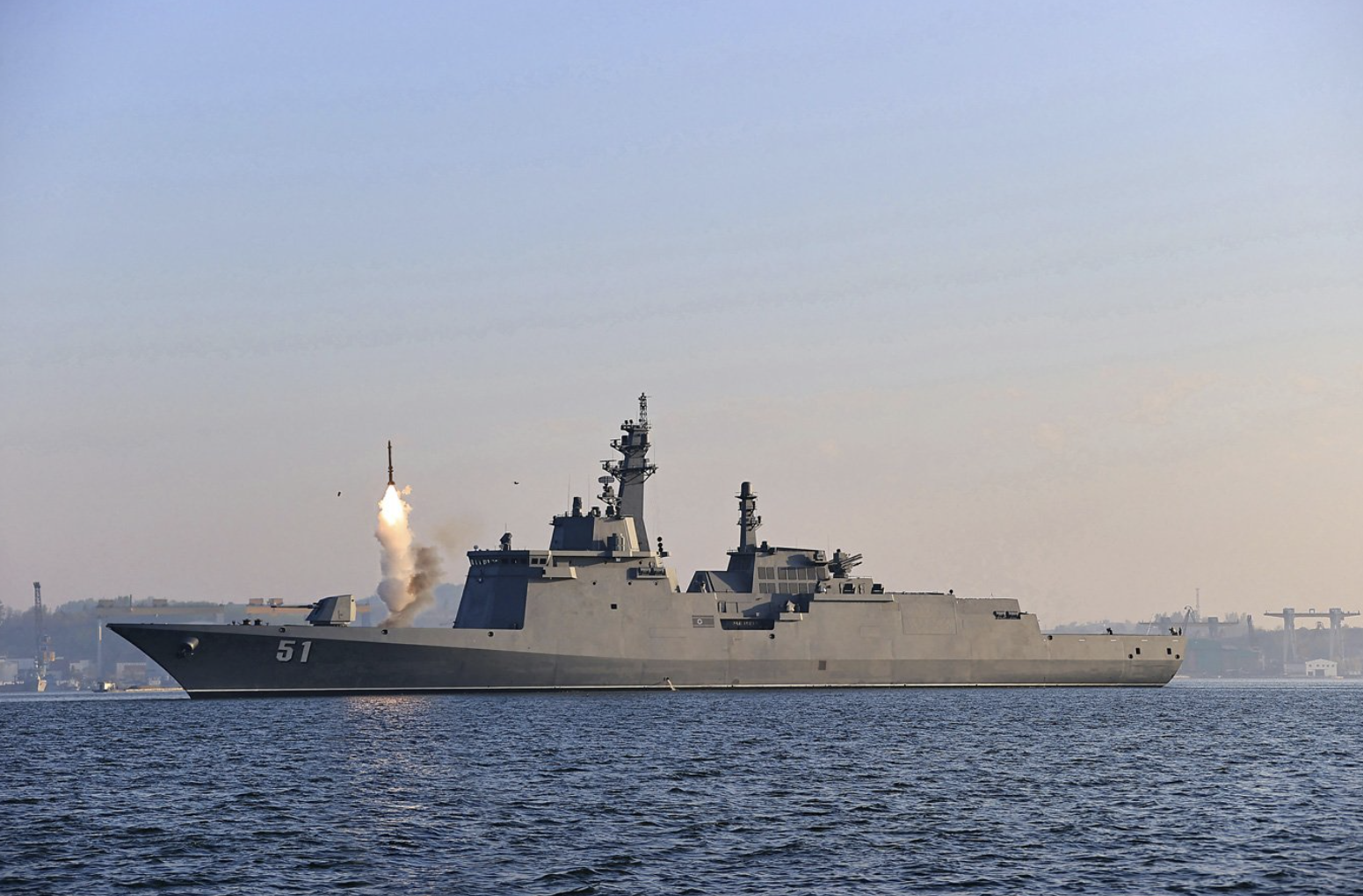
Meanwhile, the VLS arrays at the rear of the vessel are shown launching two different kinds of cruise missiles. This could well be in keeping with the different sizes of VLS cells at the stern: one of these has eight cells; one has 12 cells, similar-sized but somewhat different in shape to the medium-sized cells at the bow; the bank nearest to the flight deck has 10 larger VLS cells.
One of the missiles fired from the stern magazines appears to be the Hwasal-2 long-range cruise missile, or a variant of it. North Korea has previously test-launched the Hwasal-2 from its new Amnok class corvette. Notably, the missile is claimed to have strategic capability, implying an optional nuclear warhead, although this can’t be confirmed. We believed this would be a key part of the frigate’s armament in our recent report.
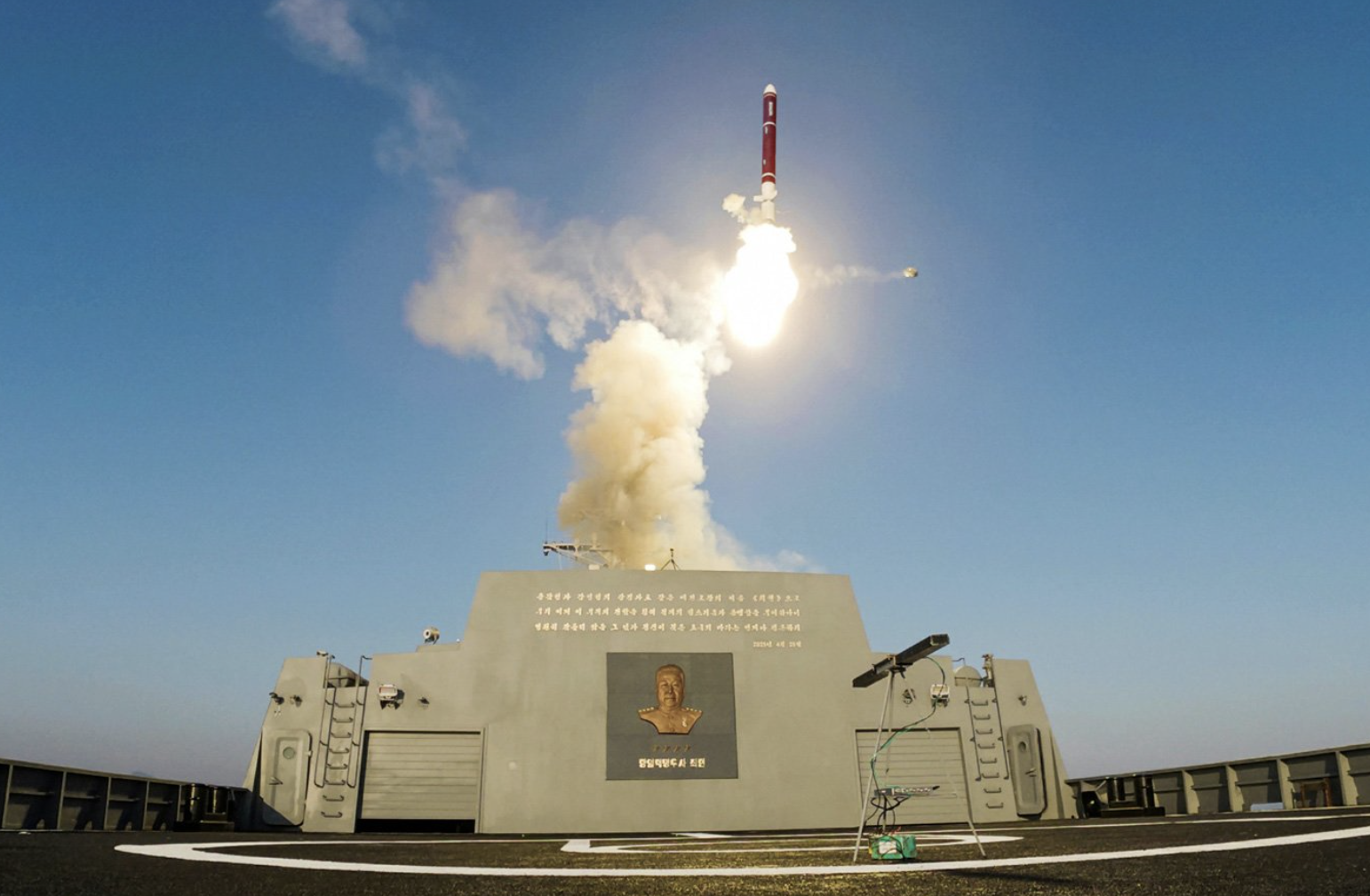

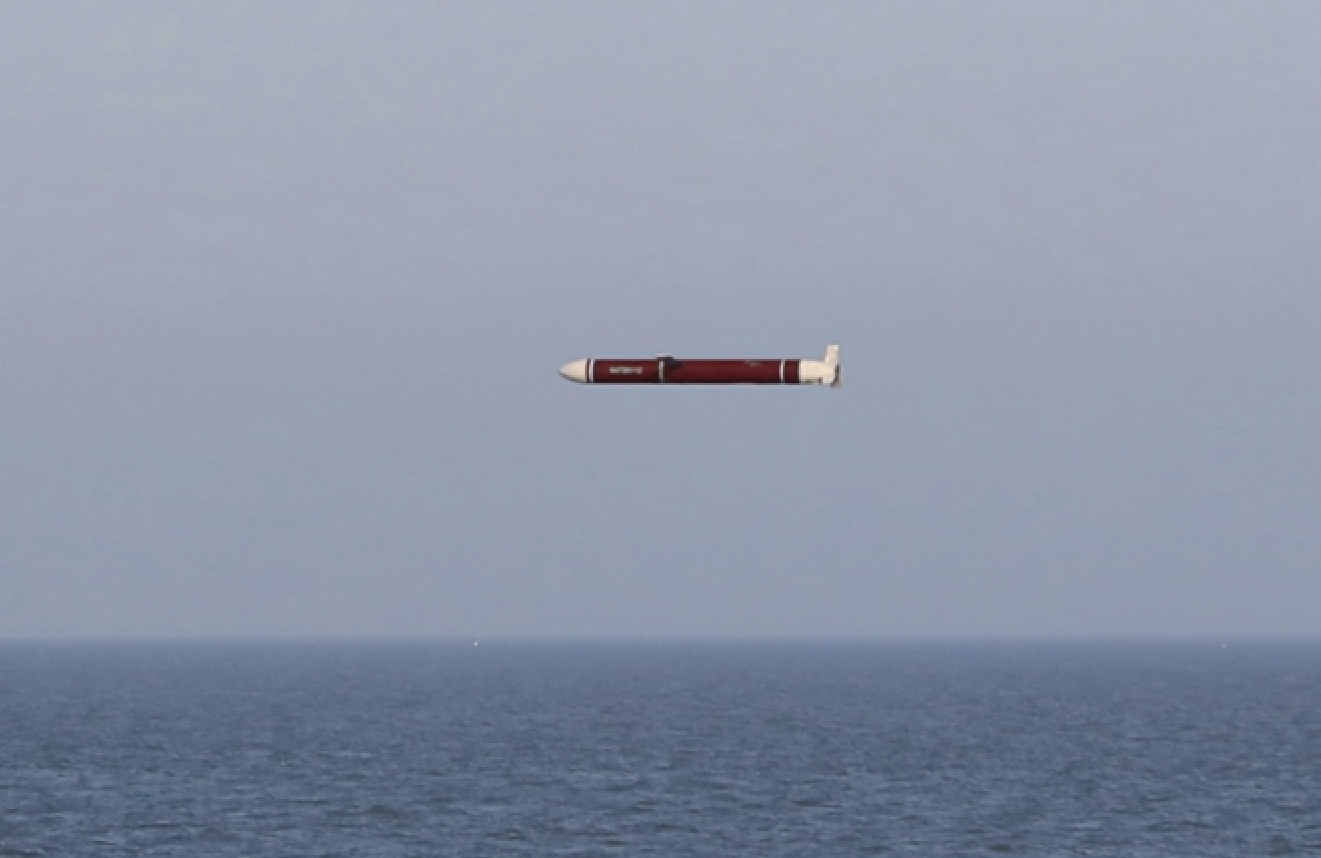
The other weapon fired from the stern magazines cannot immediately be identified but has been described by North Korean state media as a “supersonic cruise missile.”
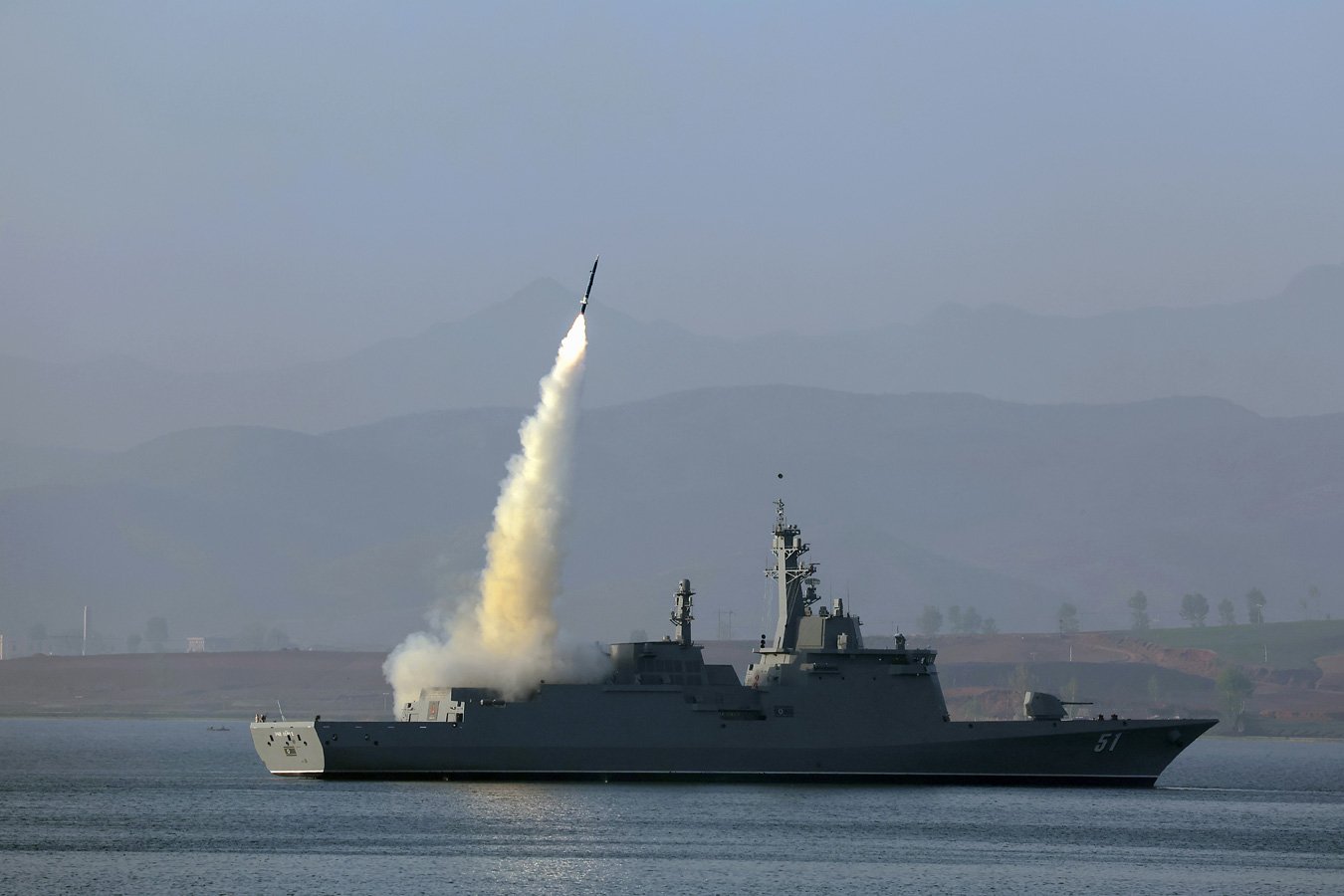
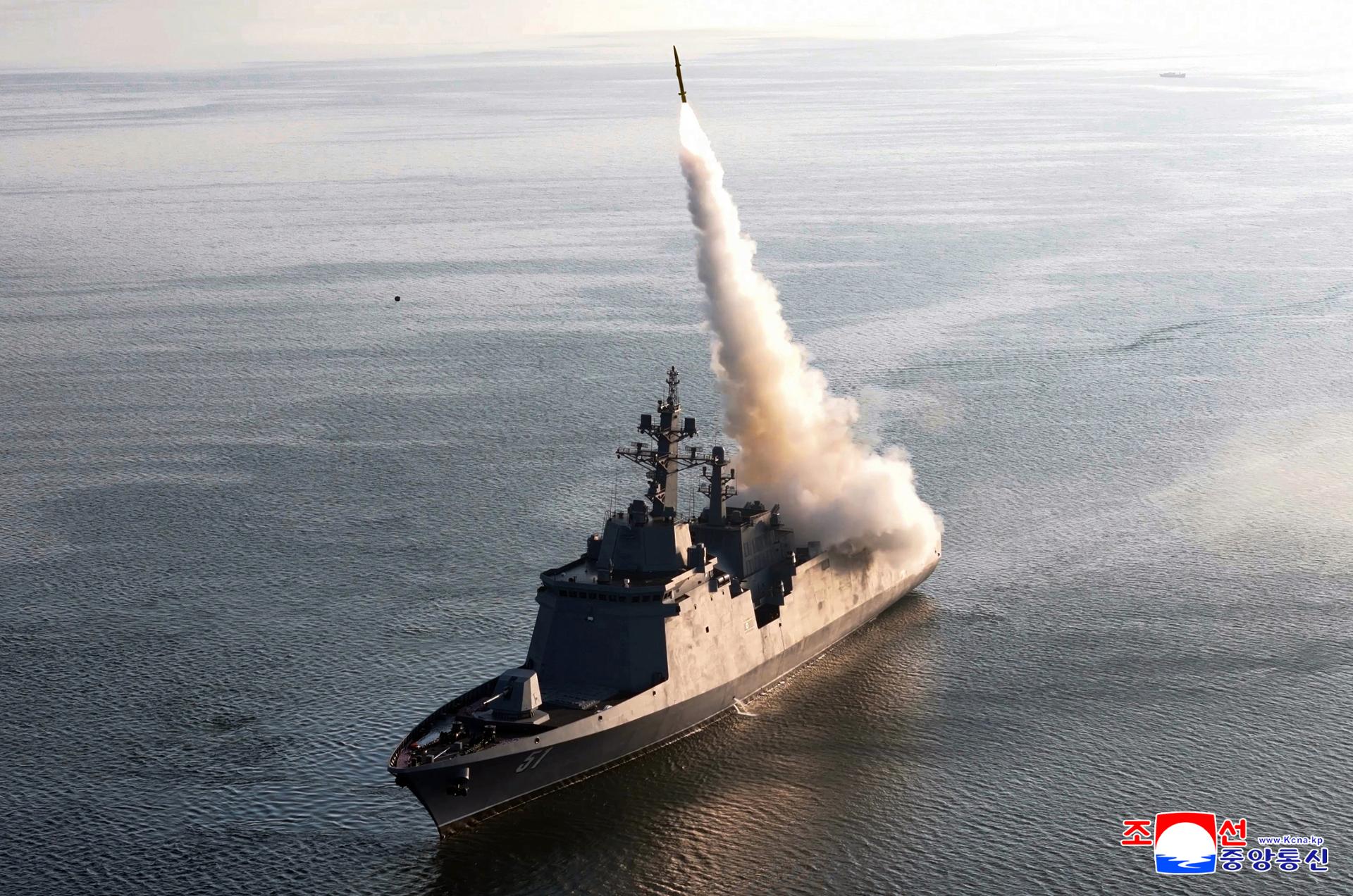


Again, what we see here suggests that this is a previously unseen missile design, although it’s also possible that the imagery has been digitally manipulated. At first sight, however, the missile in question seems to have a characteristic ‘dolphin-shaped’ forward section, something that we’ve seen in scramjet missile designs. An exotic form of propulsion would certainly be one way of achieving high speeds, although it’s certainly not the only option for a supersonic cruise missile and is more typically associated with hypersonic missile designs. At the same time, the unswept tailfins point to the possibility of a booster/sustainer arrangement.
As we have discussed before, the sheer number of VLS cells on this ship — 74 in all — is impressive, although the fact that they are provided in four (or possibly even five) different sizes comes with disadvantages, too. While the warship can accommodate a wider variety of different missiles, it is more complex than having one or even two VLS cell sizes only. Larger cells also take up more room, where more standardized, smaller cells could be installed.
In addition to the VLS cells, the warship may be fitted with angled launchers amidships. As we discussed before, these could well accommodate subsonic anti-ship missiles, although it’s inconclusive as to what this trapezoidal structure is for.
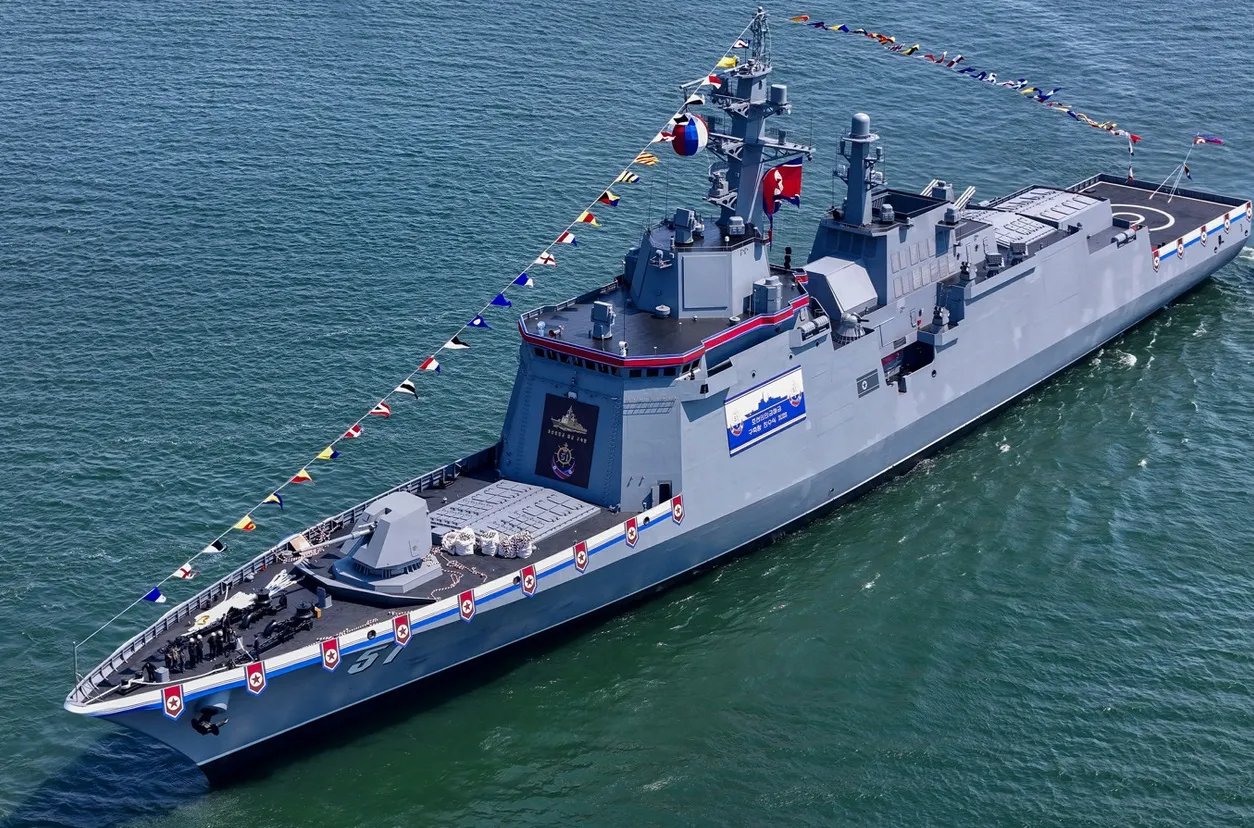
The type of missile or missiles contained in the largest (10-cell) VLS magazine located closest to the flight deck remains a mystery at this point. However, some kind of ballistic missile remains the most likely option. In our previous analysis, we suggested that a short-range ballistic missile from the Hwasong-11 family could be a likely candidate, but there are many other options too. Interestingly, putting any kind of ballistic missile on a surface warship is an emerging trend that’s also found in neighboring South Korea.
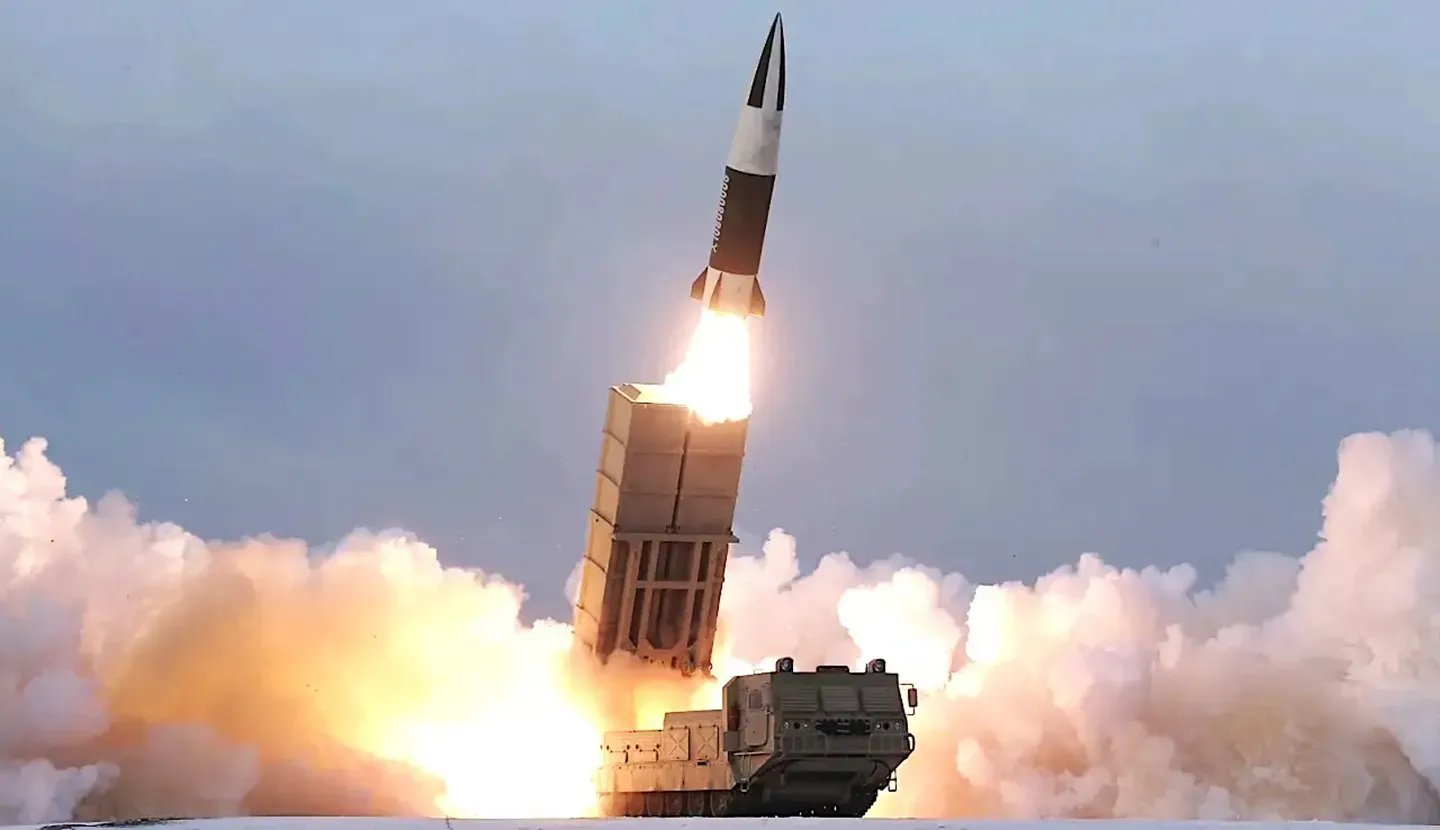
Other imagery shows the frigate’s guns being fired.
These include the main gun, fitted on the bow, which Pyongyang’s state media says is a 127mm caliber weapon, which marks something of a break from traditional North Korean naval artillery calibers.
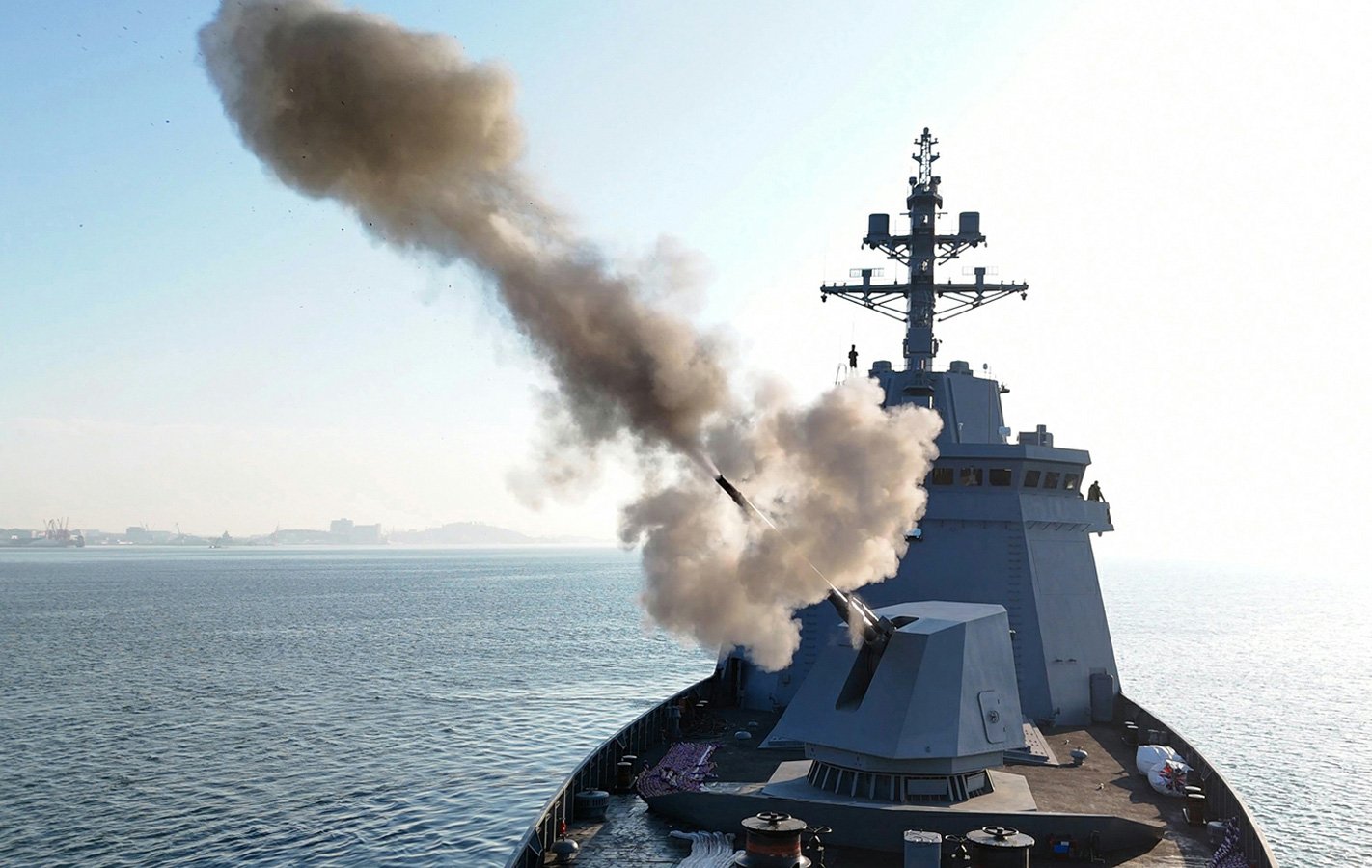
Also seen in action is one of the ship’s two AK-630 turreted six-barrel 30mm rotary cannons, mounted on each side of the ship. The AK-630s supplement the ship’s main close-in weapon system (CIWS), which appears to be a version of Russia’s navalized Pantsir-ME system, or something inspired by it, armed with both cannons and highly maneuverable short-range missiles.
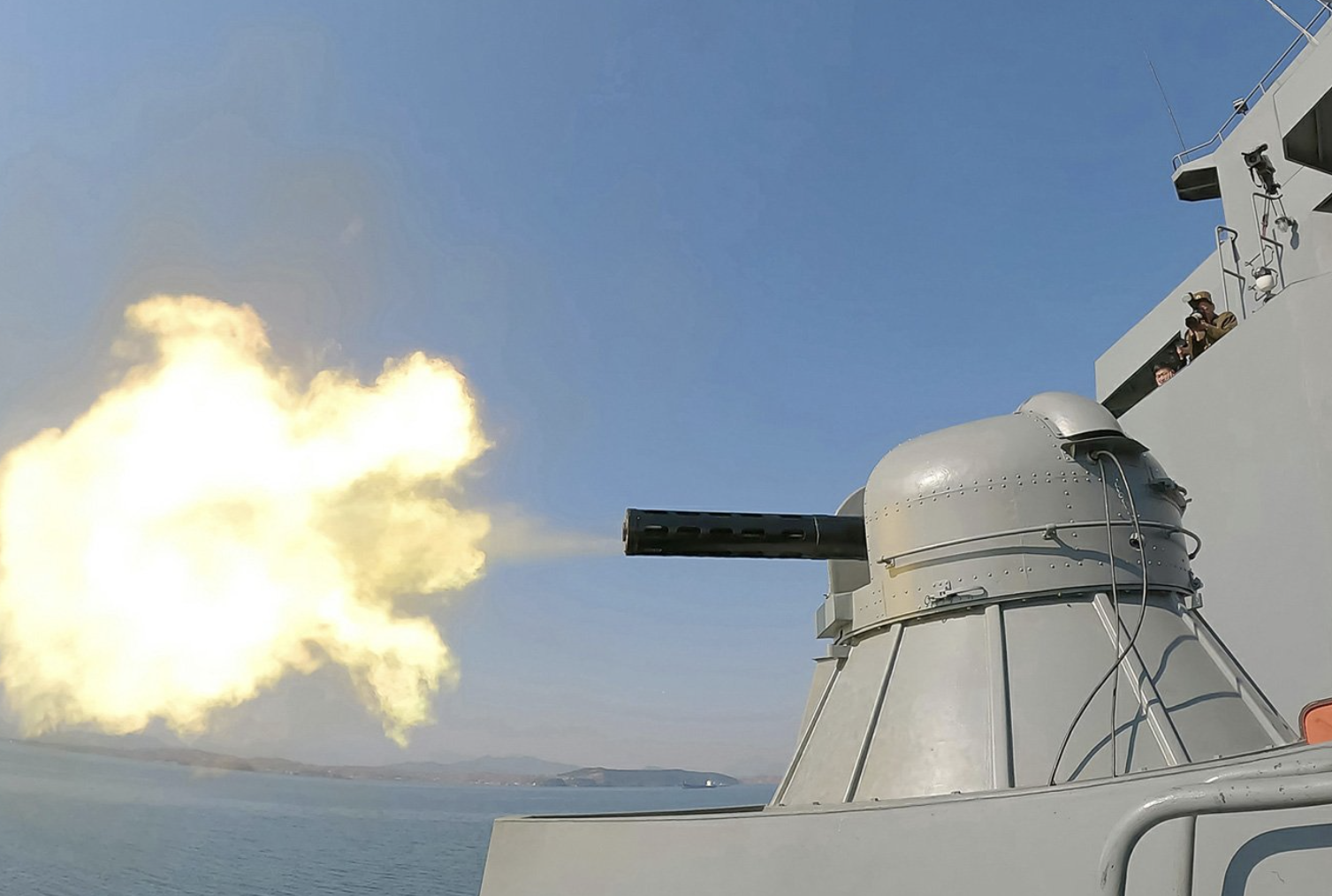
At least one of the images, seen below, shows some kind of decoys being fired from a multi-cell launcher positioned amidships.
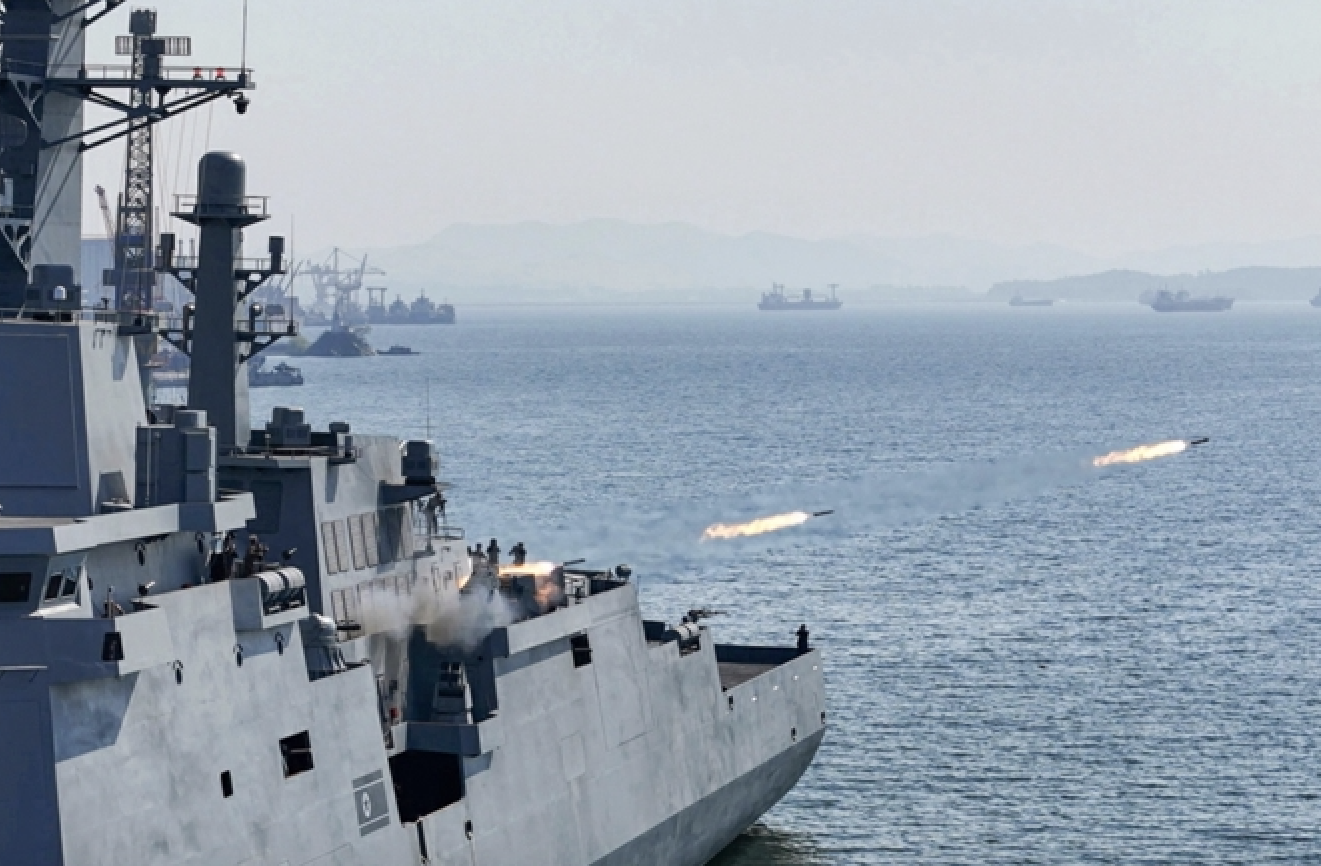
There has also been a surprising suggestion that the warship still doesn’t have its full set of propulsion machinery fitted. A bird’s eye view of the frigate, looking down the smokestack, suggests that the ship’s propulsion system might not be fully fitted. This would imply that the vessel was towed out of the harbor for its weapons tests, which is a possibility. That might also help explain claims that North Korea built the Choi Hyon in just over a year.
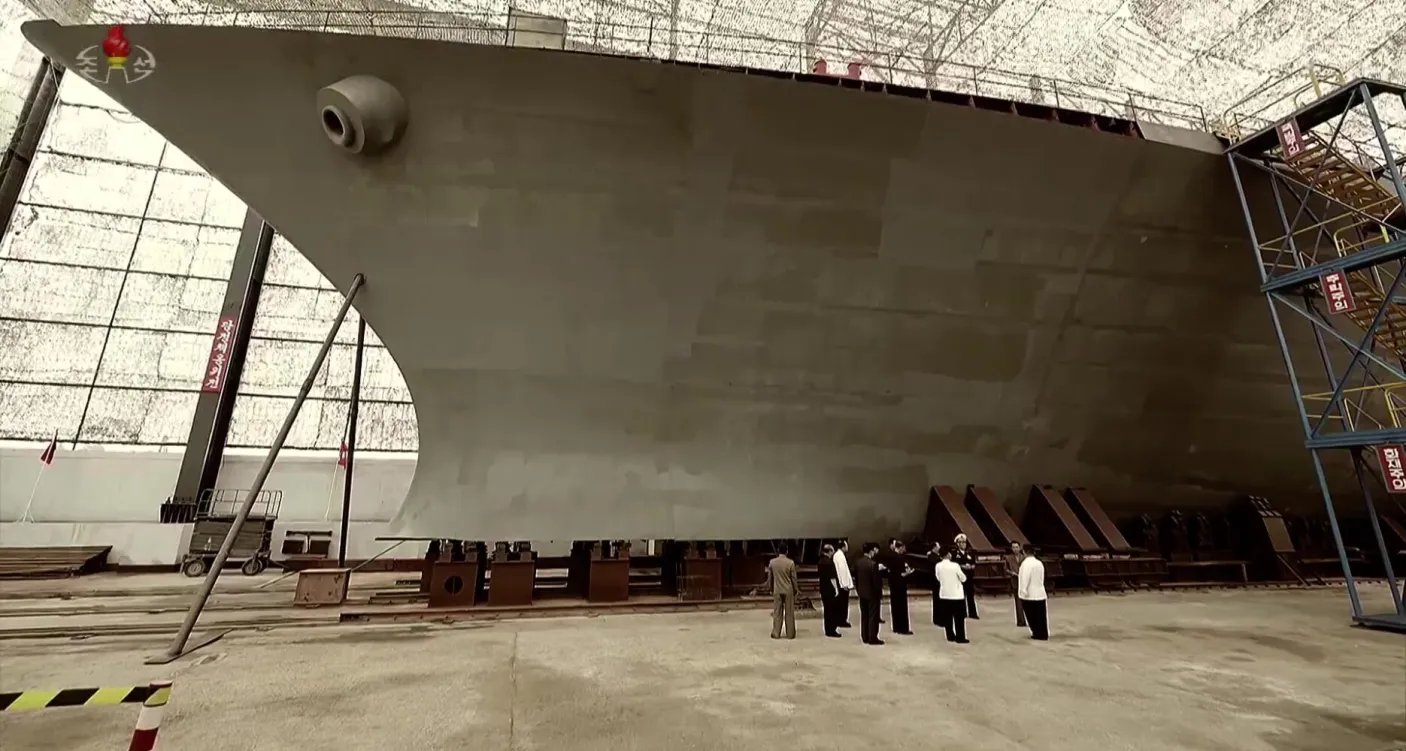
As we noted in our previous analysis, this warship has the potential to be a capable launch platform for longer-range missile strikes, but its high-profile status would place it high on the list of priority targets were North Korea to go to war. Packing it with so many VLS cells also makes it a more attractive target, although there remains the possibility it could get some of its strategic payload off before it, in turn, was targeted. Furthermore, North Korea is unlikely to be able to build further examples of the same design in any kind of meaningful numbers.
Regardless, it’s undeniably impressive that North Korea has built this warship so rapidly and has tested multiple types of missiles from it already. On the other hand, while the missiles may have successfully left their cells, we don’t know the extent of the test, and many more trials will be required before this becomes a fully functional frigate with all that it entails.
Overall, the program is probably more about presenting a token capability, evidenced by the fanfare surrounding its official unveiling and the country’s leader, Kim Jong Un, attending the weapons trials. At the same time, even a token capability can be powerful, especially if the frigate’s ballistic and cruise missiles can also be nuclear armed for strategic attacks.
In terms of packing multiple missiles of different types into the largest number of VLS cells a given hull will carry, Pyongyang has certainly achieved something in this regard.
Contact the author: thomas@thewarzone.com
